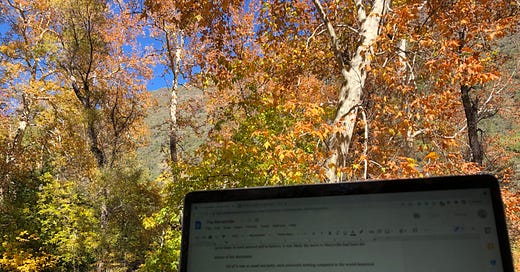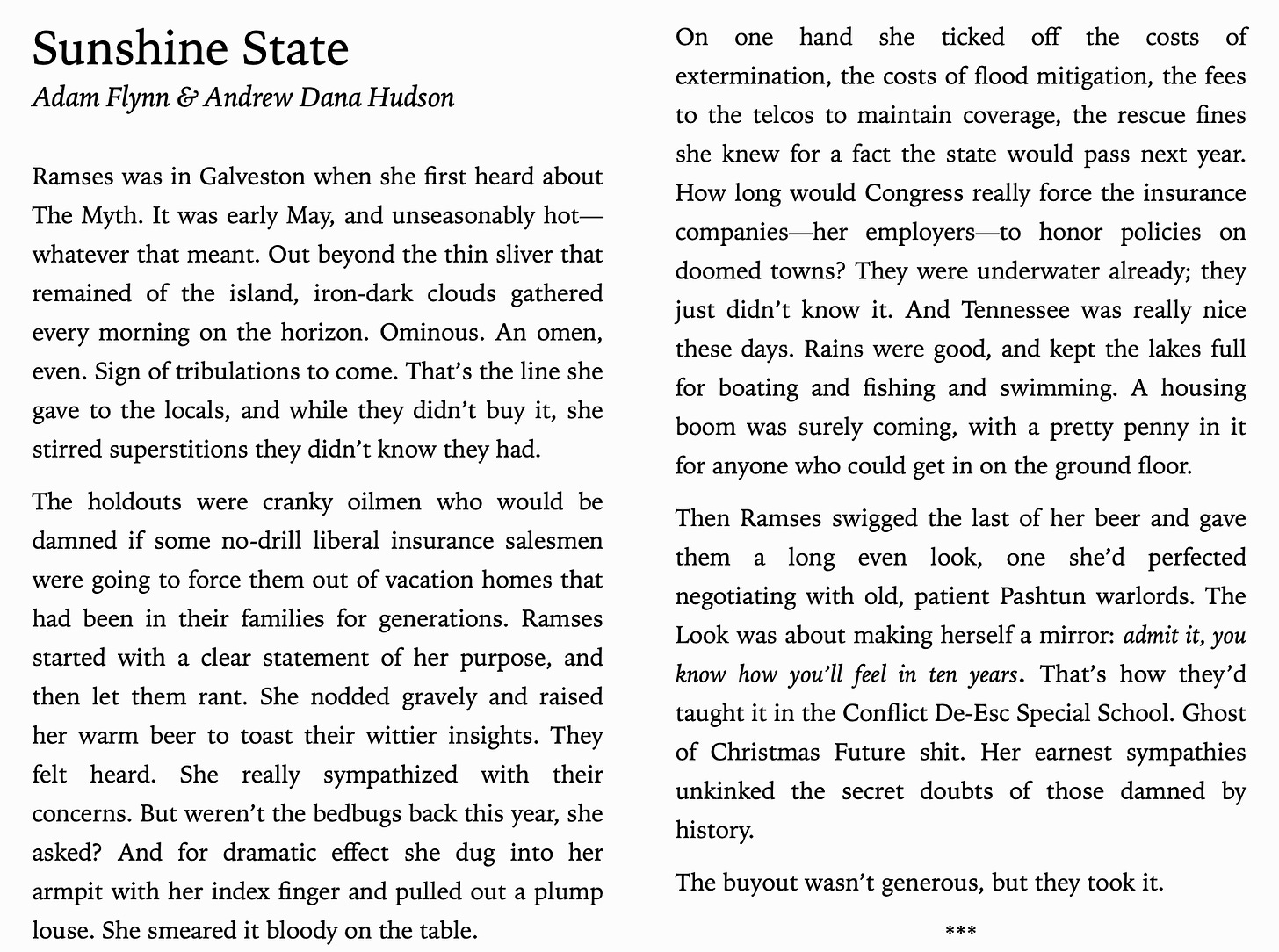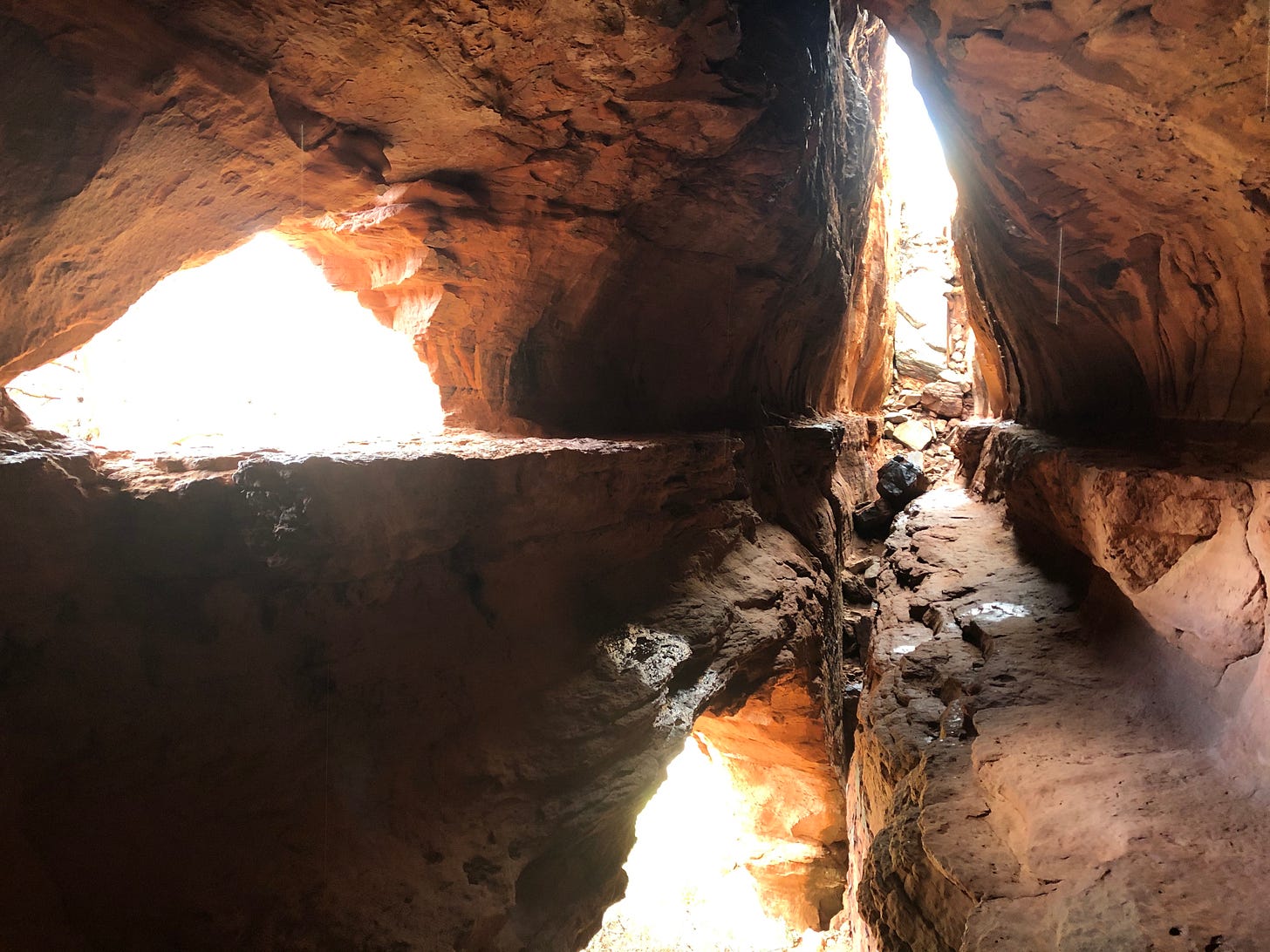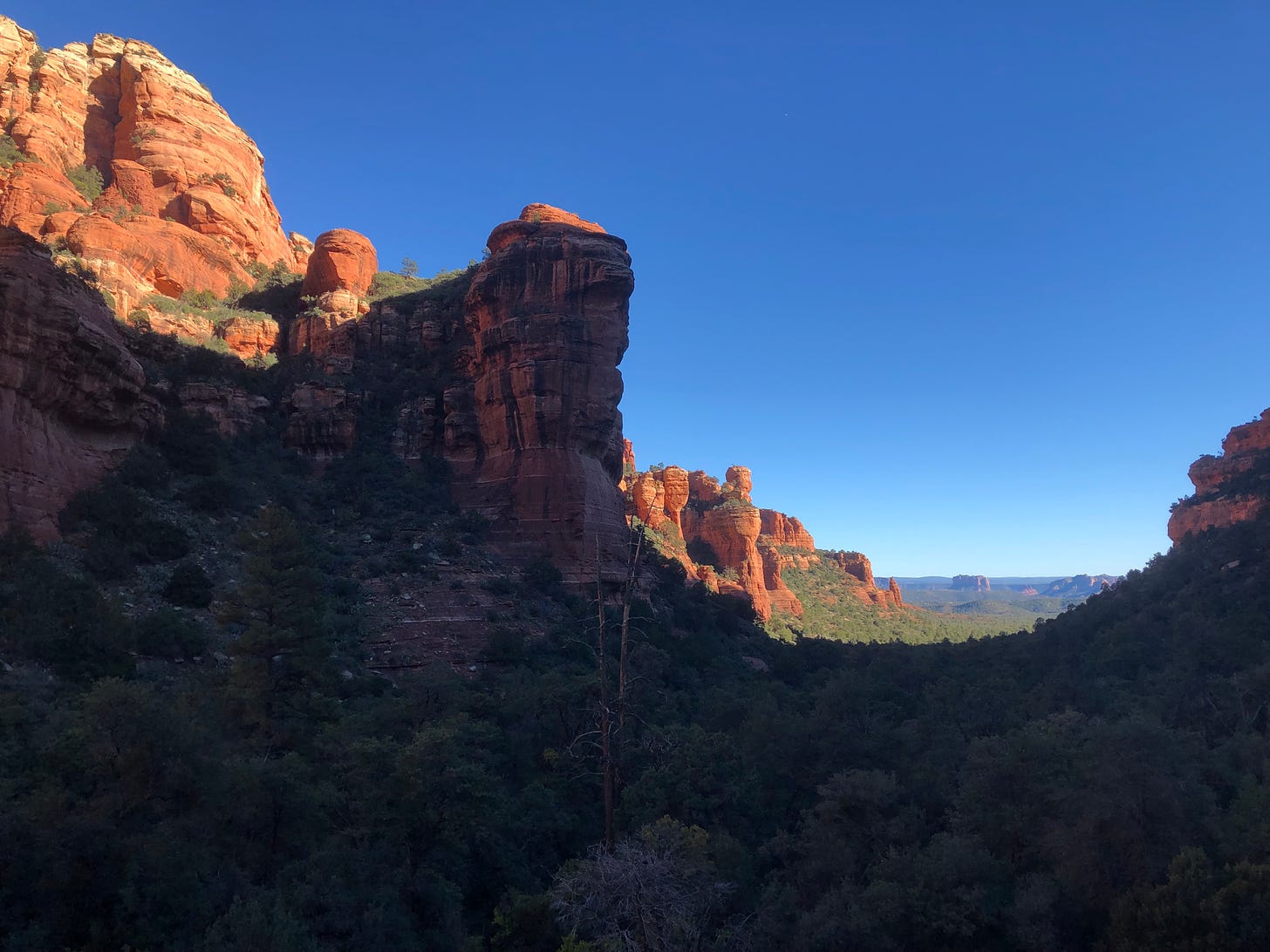Happy Halloween! Still here. I came up with some different containers to fit the different material that trickled through and from my life recently, the contours of the past two weeks.
During the first pandemic summer, when everything felt very, very normal, we’d joke that “the days are pleasant, but the weeks are bad.” It’s funny how different each of the intervals of these newsletters feels, even though the rhythms of each day stay much the same.
Part of that I think is life lived engaged in a creative process. You get up and do the work in a consistent way, but what you are making constantly changes. When you write, your stories get drawn over and under your story, just like your story entwines with the story of politics, culture, ecology and cosmos.x
Anyway, I hope you enjoy what I’ve put together below. As always the best stuff——the stuff about real life——is down at the end. If you know anyone who might enjoy my work, please forward this on. And if you aren’t actually subscribed yet, I’ve got a button for that right here.
The New-New
Lo Stato Solare: As of a week ago, I have a book out——in Italian! A bit shy of two years ago, Rome-based sci-fi writer/editor extraordinaire Francesco Verso reached out about translating and publishing a collection of my short stories via his press Future Fiction. It’s a bit odd to have my first collection published in a language that I can’t read, in a country that I’ve never visited, but we live in odd, globalized times.
Nonetheless it is the first and most comprehensive collection of my short stories available anywhere, and I’m very proud of it. The book contains fifteen stories, including one that has never been published in English: “The Flesh Trade,” perhaps the wonkiest story I’ve ever written.
Sci-fi great Kim Stanley Robinson was kind enough to read the manuscript in English and offer the following blurb
“Hudson has found a way to strike together all the various facets of our rapidly changing climate future, sparking stories that are by turns ingenious, energetic, provocative, and soulful.”
And Francesco has this to say (translated from Italian):
“Andrew Dana Hudson tells realities that don’t exist as if they were already here. And he describes them with a certainty and insight that are found only in a few other authors, such as William Gibson. If cyberpunk has exhausted its science fiction charge, grafting itself in a dangerously natural way into the fabric of global post-capitalism, it is due to authors like Andrew Dana Hudson who have made this genre obsolete by laying the foundations (or rather by sowing the seeds) of alternative futures through solarpunk.”
If you read Italian, want a gift for someone who does, or just want to be an ADH completionist, you can buy it in the US in paperback or Kindle here, or in Italy here.
Works in Process
The Remainder —— My X-files investigation novel about a slow-moving, covid-coded, supernatural rapture. Picked off a few long, tricky scenes despite tweaking my shoulder and spending the better part of a week half-avoiding extended typing. Now I’m basically right at the climax, which is at last coming into focus. Wish me luck.
“Boomtown” (working title) —— a fun short story collab with Aussie sci-fi writer (and fellow newsletter haver) Corey J. White, answering an interesting anthology call about energy futures. I’m going to really throw my back into this in November, but we’ve already had a couple of brainstorming calls and like what we’ve sketched out so far.
A few more chapters/substances down in the drugs+capitalism book I’m editing. Continues to be interesting and provocative. I’m finding I quite like having an editing project to alternate with writing days, or to pick up on writing when I hit a good stopping point early. The downside is, I’ve skipped attending the Mighty Central Phoenix Writing Group for a couple weeks: I haven’t wanted to bring endgame novel chapters to read, and giving other people feedback feels too much like work while I’ve got this editing gig going. Still, I hope I can pick up similar jobs once this one is shipped. Feel free to reach out if you’re interested in hiring me for editing work.
ICYMI
“Sunshine State” —— The story that gives its name to Lo Stato Solare came out five years ago this month, winning the ASU Imagination and Climate Futures Initiative’s first climate fiction contest and leading off the resulting Everything Change cli-fi anthology (a free ebook). The first piece of fiction I’d written in 5+ years, I co-wrote the story with OG solarpunk booster Adam Flynn. Both of us had written about the nascent genre, and so we decided to put our money where our mouth was and try to write some actual solarpunk fiction. Eventually Stan Robinson picked this story out of the contest finalists and launched me on the writing journey I’ve been on since. Beginner’s luck is a helluva drug.
Adam and I knew we didn’t want a story about a single hero saving the world with guns, fists, or even genius invention. Instead, we made our protagonist a negotiator and community organizer, someone who has to painstakingly build the kinds of coalitions necessary to do big ambitious things. And we mashed up the utopian ideals of solarpunk with the ill-advised enthusiasm characteristic of the iconic criminal/folk hero “Florida Man.” The result is a story jammed with more ideas than a piece of short fiction has any right to contain, and yet, of all the stories I’ve written I believe this one is the most solarpunk.
I first wrote the opening scene (below) on my phone, in Cuba, on Christmas Day, while hungover and shellshocked from the all night parade I’d had the utter honor to witness while visiting the town of Remedios. I like to think that a little bit of that homemade-communist-bottle-rocket energy infused the story that day.
You can read more of my work via my website. If you’re a fan of the above, consider preordering my next book, Our Shared Storm: A Novel of Five Climate Futures, coming April 2022.
Thread Incoming
This is a bit inside activist baseball, but I ranted a bit recently about the long game of climate repair:







Material Reality
This past week C and I spent a couple nights up north of Sedona, at a small campground in the shadow of a high butte. Our campsite faced a red rock cliff, and all night we could hear the shushing of a nearby creek. The trees were showing off the full spread of fall oranges and yellows, dropping leaves in anime-esque swirls of slo-mo color. It was very pleasant.
Sedona should absolutely be a national park. It’s got to be one of the most beautiful bits of scenery on the continent. Instead it gets eaten into every year by private landowners and for-profit tourism. Trailheads are enveloped by retirement subdivisions. There’s constant helicopter flyovers and pink jeeps everywhere. You’ll be hiking through a lush, crimson-clay valley between soaring buttes, and suddenly you’ll stumble into someone’s par-three.
Still, I’ve yet to have a bad time when I come up. Last time we were here was pre-pandemic, and we hiked Soldier’s Pass to a set of exquisite caves. In a fugue of daring that now seems impossible, I edged my way up the various ledges within the cave and eventually scrambled out on top of the butte. It’s the kind of memory that hammers home how risk-averse the pandemic has made me. Here’s the cave:
And the view from on top of the butte (gf for scale):
This time we took it easier, doing a light hike through Fay Canyon, which ended with a clamber up to one of the best views I’ve seen in Arizona. I promise I’m not usually so hype about sharing hiking pictures, but Sedona is just so fucking photogenic:
C is fresh off shipping her manuscript to beta readers and taking a well-deserved break, but I made it a working trip. Summer 2020, when Arizona was the global epicenter of the pandemic, we invested a few hundred bucks into a small, portal solar setup, which we figured would help us get out of dodge. The 100 watt briefcase photovoltaic panel and milk jug-sized battery/generator have totally changed the game on writing in the wild. Now we go camping every month or so, and we bring our laptops, using the scenic views and lack of wifi to jolt us out of writer’s block.
The battery keeps our devices charged, and the solar panel keeps the battery charged. It’s remarkable how quick the latter happens when you find the right patch of sunlight, the right angle. If it’s patchy or cloudy, electrons trickle in slow and steady, and it can take hours to get a full charge. But if the sun is strong (and yes, one thing I’ve learned living in the desert is that the sun is definitely stronger some days than others) you can fill up in sub-40 minutes.
It changes your rhythms, connecting your electronic life to the movements of the sun. But mostly the setup gives me a profound feeling of freedom and flexibility. We’re still dependent on campsite reservations and grocery stores and wireless broadband, but the grid——well, for a few days, or a few weeks, or however long we fancy, we could tell the grid to shove it.










Nice pics!